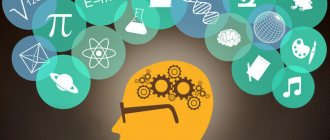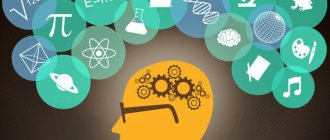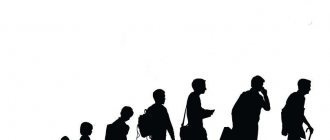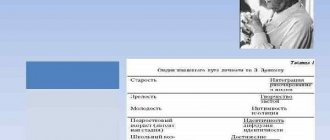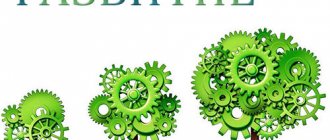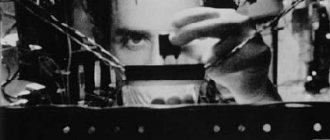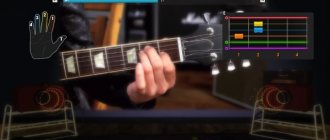Programmers are nowhere without logic. Therefore, it’s time to pump up your brain: test your abilities. Can you handle these logical tasks?
It is useful to solve both logical and mathematical problems. This is how you develop logic and train your brain. Due to his profession, it is extremely important for an IT specialist to monitor the tone of his main “muscle”. The brain loves problems and puzzles, as well as switching attention and taking a break from routine. So let’s get down to some useful fun!
Money paradox
Richard and Paul have the same amount of money.
How much should Richard give to Paul so that he has $10 more than he does? Answer: 5 dollars. Many people answer $10 and make a mistake. Let's say each friend has $50. If Richard gives Paul $10, then Paul will have $60 and Richard only has $40. Therefore, Paul will have $20 more than Richard, not $10.
Show answer
Hide answer
Logic puzzles
13. How to measure 4 liters of water if there are 5-liter and 3-liter containers?
14. How to make the number “4” without breaking a single stick.
15. Which kettle contains more tea?
Wine price
A bottle of wine costs $10. Wine is $9 more than a bottle. How much does an empty bottle cost?
Answer: 0.5 dollar or 50 cents. Many people answer 1 dollar, but this is incorrect. If the bottle really cost that much, then its contents should be $9 more expensive - $10. This means that wine and a bottle would cost $11. And if a bottle costs 0.5 dollars, wine costs 9.5, then everything together is exactly 10 dollars.
Show answer
Hide answer
Enterprising Trader
The merchant bought the product for 7 dollars, sold it for 8, then bought it again for 9 and sold it again for 10. How much profit did he make?
Answer: 2 dollars. Let's say that a trader has $100, and during the day he will make only four of the transactions described.
First, he will pay 7 dollars for his purchase, then he will have 93 left. When he sells his purchase for 8, he will already have 101 dollars.
Then he will buy the same item again for $9, that is, he will again spend $9 on the purchase, leaving him with $92. Finally, he will sell the item for 10, and therefore he will have 102 dollars.
Show answer
Hide answer
Development of social intelligence in a child: exercises, games
Games for the development of social intelligence help a child acquire certain social and communication skills and learn to behave actively in society: not to be afraid of communication, tactile contact, and not to be shy.
Game for the development of social intelligence “Sleepy Little Engine”
This game allows each child to plunge into the world of their feelings and trust another person. The point of the game is to get from point “A” to point “B” blindfolded, completely trusting the one who will lead you. To do this, several children line up in a row and each one is blindfolded, except the first.
It is best to play this game on a playground where there are some obstacles. The guide (the first engine) tells the next one what to do: bend down, raise your leg, jump, and he tells the next one. Each engine repeats the actions of the previous one and diligently overcomes obstacles, moving forward and holding its comrade by the shoulders.
While playing, children learn to communicate with each other, not be afraid of being deceived and learn to help each other. In addition, the lack of vision allows children to visualize objects around them in their heads.
Play is the best way to develop skills
Game for the development of social intelligence “Magic Bouquet”
This game will help teach children to show interest and attention to everything that surrounds them. In addition, it encourages children to establish friendly, friendly relationships and have only positive emotions from communication. This is done very simply - with the help of compliments and pleasant words.
To play you will need the following required paraphernalia and a calm environment:
- a large green sheet of paper (whatman paper size) or green fabric - this will serve as a clearing
- multi-colored paper and scissors - to create petals
The presenter invites the children to fill the clearing with colorful flowers, but in order to do this, they will need to dedicate each petal to someone. Each attached petal is a pleasant compliment to anyone present.
Big and small birds
The pet store sells large and small birds. A big bird is twice as expensive as a small one. The woman bought five large birds and three small ones. If she had bought three large birds and five small ones instead, she would have spent $20 less. How much does each bird cost?
The price of one large bird is equal to the price of two small ones, so five large birds will cost the same as 10 small birds. This means that five large birds and three small ones will cost the same as 13 small ones. On the other hand, the price of three large and five small birds is equal to the price of 11 small ones.
Thus, the difference between the price of five large and three small birds turns out to be equal to the difference between the price of 13 and 11 small birds, that is, equal to the price of two small ones. Since two small birds cost 20 dollars, the price of one of these is 10 dollars.
Therefore, the bill for five large and three small birds would be $130. If a woman bought three large and five small birds, she would spend $110, which is really $20 less.
Answer: a small bird costs 10 dollars, a large bird costs 20.
Show answer
Hide answer
The Ten Favorites Problem
Ten dogs and cats were fed 56 biscuits. Each dog got six biscuits, each cat five. How many dogs and how many cats were there?
There is a solution to this problem that requires neither algebra nor enumeration of options. First, let's feed each of the ten animals five biscuits. There will be six biscuits left. But now all the cats have received their fair share! This means that the six remaining biscuits are for the dogs. And since each dog should get one more biscuit, that means there are six dogs and four cats.
This solution is easy to test. If six dogs eat six biscuits, it will cost 36 biscuits. Four cats, each content with five biscuits, will eat 20 biscuits. This will total 56 biscuits.
Answer: four cats and six dogs.
Show answer
Hide answer
Motorcycle rides
You have 50 motorcycles with a full tank, which is enough for 100 km of riding.
Question : Using all the motorcycles, what is the maximum distance you can travel? All motorcycles at the beginning of the journey are conditionally at one point.
Answer
The simplest solution that can come to mind is to simply start all the motorcycles and ride them for 100 km at the same time. But you can go further. To do this, first drive 50 km. All motorcycles will have half-filled tanks. Transfer fuel from one half of the motorcycles to the other half. You now have 25 motorcycles with a full tank. Drive another 50 km and repeat the operation. This way you can travel 350 km
Plain socks
In a dark room there is a closet, in a drawer of which there are 24 red and 24 blue socks. What is the smallest number of socks that must be taken from the drawer so that they can be used to make at least one pair of socks of the same color?
Answer: three socks. If you take three socks from a drawer, they will either all be the same color, or two socks will be one color and the third sock will be a different color, which will also make a pair of the same color socks.
Show answer
Hide answer
Your psychologist. The work of a psychologist at school.
1). Explanatory note of the lesson program “Development of the child’s intellectual abilities” (younger adolescence 10-14 years). The most sensitive period for the development of children's intellectual abilities is the age from 3 to 8 years. By the end of adolescence (by the age of 15), the development of a person’s intellectual abilities is completed. If for some reason classes were not conducted with the child aimed at developing memory, thinking, perception, attention in preschool and primary school age, then it is not too late to do this in adolescence. Abilities develop through activity, and the development of abilities requires high cognitive activity of adolescents. Moreover, not every activity develops abilities, but only emotionally pleasant ones.Training in attention, perception, thinking, and memory also contributes to the development of all personal qualities of adolescents. They gain group work skills, where the ability to hear others and understand their intentions is important, i.e. communication abilities develop. The goal of the program : a positive change in the intellectual development of a teenager (development of memory, thinking, perception, attention, etc.). Program objectives : 1. Maintain a high level of interest and cognitive activity in a teenager, 2. development of logical thinking, attention, semantic memory, 3. development of cognitive abilities, which will allow teenagers to more successfully master the material of the high school program. Forms of work : - group lessons for 45-60 minutes (1-2 times a week), - training of attention, memory and other mental operations,
- diagnostics,
- individual counseling for adolescents, parents and teachers upon request.
Groups for classes are formed at the request of teenagers, the request of teachers and parents. At the beginning of classes, children's abilities are diagnosed. "Diagnostics of the intellectual abilities of children 10-14 years old." Purpose of diagnosis:
- Identify the level of intellectual abilities (level of attention, memory, creativity, thinking, etc.).
- Form groups for developmental activities with teenagers in order to improve intellectual abilities.
3) Maintain a high level of interest in cognitive activity. Methods used: 1. “Graphic dictation.” Goal: determining the level of development of the child’s voluntary sphere, studying possibilities in the field of perceptual and motor organization of space. 2. “ Imaginative memory” Purpose: study of short-term memory (as the volume of memory - an image (image of an object, geometric figure, symbol)). 3 . "Intellectual skills." Purpose: to study holistic actions formed as a result of exercises, characterized by a high degree of mastery and the absence of element-by-element conscious regulation. 4. Research on creativity. Goal: studying creative achievements, the ability to use information in different ways. 5. "Attention."
Goal: Determine the amount of attention and its concentration. In the final part of the classes, repeated diagnostics are carried out, the data is interpreted and final comparative tables are drawn up, conclusions are drawn up. The results are given to teachers, head teachers, parents and explained to the children. 2). Thematic plan-program “Development of a child’s intellectual abilities” (younger adolescence 10-14 years), 34 hours/year. Themes
| Lesson objectives | |
| 1.Perception. | -Development of perception as an intellectual process, which is based on an active search for signs necessary to form an image of an object. |
| 2. Attention. |
|
| 3. Memory. | — Development of various types of memory (visual-figurative, verbal-logical, emotional memory) and properties (volume, strength, accuracy, organization). |
| 4. Thinking. | - development of abstract thinking, its forms and basic operations (analysis, synthesis, comparison, abstraction, generalization, concretization, classification). |
3). Conclusion. For successful education at the secondary level, for teenagers to understand and assimilate educational material, 3 components of thinking must be formulated:
- high level of elementary mental operations (analysis, synthesis, comparison, generalization, etc.);
- a high level of activity, relaxed thinking, manifested in the production of a large number of ideas;
- a high level of organization and purposefulness of thinking, manifested in an orientation towards identifying what is essential in phenomena, in the use of generalized schemes for analyzing the phenomenon.
A high level of voluntary attention, high stability of attention, sufficient volume and distribution of attention, as well as a high level of perception and memory in a teenager are necessary for successful educational activities. By working with teenagers to develop intellectual abilities, you can achieve good results.
4). Fragment of the lesson. Exercise No. 1. Game "Spider". The goal of the game is to correct deviations in the development of perception and orientation in space,
- development of attention, coordination of movements.
Instructions: “Now we will play this game. In front of you is a field lined with squares. A spider is crawling across this field. The spider moves on command. It can move down, up, right, left. I will dictate your moves, and you will move the spider across the field in the right direction. Do it mentally. You cannot draw or move your finger across the field! Attention! Let's start. One cell up, one cell left, etc. Draw in the box where the fly stopped….(fungus).” Drawings can be different: sun, house, cloud, etc. You can introduce a second character into the game, for example a beetle or a fly; increase the field to 25, 36 cells.
Exercise No. 2. Goal: development and correction of attention switching. Instructions: “You will work with a table (“Arabic-Roman table”), divided into cells in which numbers are written in Arabic and Roman numerals in random order. You must find the Arabic numbers in the usual order from 1 to 25, and the Roman ones in the reverse order, from XXIV to I. You must alternately look for the numbers of both series, i.e. the order of your work should be: 1, XXIV,2,XXIII,3 XXII, etc. In total, each pair makes the number 25. You need to work as quickly as possible, without making mistakes.”
| 7 | III | 4 | 24 | XI | 14 | VII |
| 1 | 15 | XX | II | 10 | XVII | 9 |
| 11 | X | 7 | XXIII | V | 22 | XIII |
| 19 | 21 | XXI | 11 | XIX | 8 | 17 |
| XII | 3 | 5 | XV | 20 | VI | 12 |
| 25 | IX | IV | XVIII | 2 | XVI | VIII |
| 13 | XXIV | 1 | 16 | XXII | 23 | 18 |
Exercise No. 3. Game “Edible - Inedible” Goal: development of attention, Relieving fatigue from the previous exercise. Instructions: “Let’s play the game “Edible - Inedible.” I will name different objects and words, you must clap your hands if it is edible and remain silent if it is inedible. Whoever makes a mistake is out of the game. I will always clap, be careful. At the end, the most attentive participant in the game will remain. Attention, we started: “apple, orange, carousel, house, telephone, jam, cookies, etc.” The words gradually become more complex and the pace of the game increases.” Exercise No. 4. Finding words - antonyms. The goal is to develop verbal abilities. It is better to conduct the exercise with teams in the form of a competition (which team will complete the task better and more efficiently). Instructions to students: “I will call out a word to each team in turn; you must answer with a word that has the opposite meaning, i.e. name an antonym word. Try to answer quickly and correctly. The team that names the most words - antonyms - wins. Example: “night” - “day”, “narrow” - “wide”, etc.” The left column contains concepts that the teacher should name, and the right column contains a possible answer.
- beginning-end. 8. descent and ascent.
- poor-rich. 9. attack-defense.
- warm-cold. 10. holiday-weekdays.
- anxiety-peace. 11. freedom-slavery.
- matte-shiny. Etc.
- active-passive.
- absent-minded - attentive.
Exercise No. 5. “Cities”. Goal: development of memory and thinking. The participants of the game sit in a circle. Game conditions: the presenter names a city, for example Moscow. The first participant in the game must remember the name of the city starting with the letter A. For example, he calls Armavir. The next one must remember the name of the city starting with P, etc. If one of the players named a word ending with a letter with which the name of no city begins or cannot remember the name of the city, he is eliminated from the game. The last one standing wins.
Exercise No. 6. "Searching for commonalities." Goal: development of thinking. Instructions: I will offer you two words that have little connection with each other. For example: a tin can and a cup, a tree and a house, chalk and flour, a matryoshka doll and a construction set, a dish and a boat. In 10 minutes you must write as many common characteristics as possible for a pair of objects. The answers can be the most common, standard: in the example of “dish” and “boat” such general properties as “made by man”, “have depth” can be named. It is necessary to indicate as many of these characteristics as possible. But especially valuable are the unusual answers, which allow you to see the proposed words in a completely new light.”


